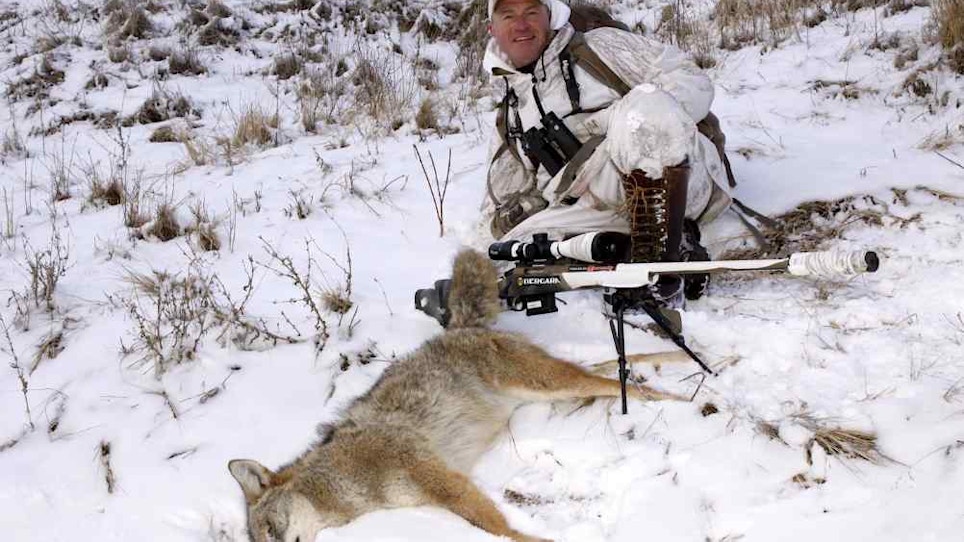
When the going got tough, call in ravens and crows as backups to help make predators come running. (Photo: Mark Kayser)
Nobody is going to debate that most coyotes today are craftier to call than your adolescent at curfew time. Of course, there is no magic remedy or tactic waiting in the wings as a cure all, but you can increase success by building a coyote’s confidence.
If distress calls and coyote vocalizations don’t seem to be building esteem, consider calling in real character re-enforcements. Send an invitation to the birds.
I’ve been birdy for years (anyone will tell you that), but while working at Cabela’s stores for predator promotions I’ve been surprised by how many people treat bird sounds like a secret. During a December event a veteran caller pulled me aside and in a hushed tone suggested I add in lots of magpie to my calling. He had been killing coyotes the previous week and believed the calls of the black-and-white scavenger were the answer.
This past weekend several other callers and I shared some of your answers to hard-won battles in the coyote fields. Although not in covert secrecy, we all agreed that when the going got tough, call in ravens and crows as backups.
Instead of keeping this little secret I’m sharing it. It likely isn’t news as I and others previously have written about using bird sounds in setups, but you may have overlooked it recently in your search for another sound to pique a coyote’s interest.
What can birds add to your setup?
Confidence
Bird sounds build confidence. Coyotes see these scavengers as not only added competition to a sinewy snack, but also as aerial lookouts. They likely look to them as the drones above looking for danger. Have you ever walked over a hill to surprise a flock of scavenger birds on a kill? They explode and the squawking sends an alarm across the landscape that coyotes listen to with high value.
Urgency
Coyotes look to scavenger birds for guidance with volume control. Auditory sounds from excited scavengers provide dinner-bell clues that can reverberate across the landscape on a calm morning. The caws of crows, the croaks of ravens, the chatter of magpies and the screams of jays all have an added urgency during a feeding frenzy. Normal chatter amongst these birds can draw in a coyote, but when you add in the gathering frenzy of a flock it can be a game changer.
Movement
Third, coyotes look to the skies and take notice of aerial activity. An added bonus of using scavenger sounds on your electronic caller is the possibility of calling in real birds. Calls beget real results. Oftentimes you’ll be covered up with crows and the likes when using excited birds sounds in your setups. These feathered friends create an aerial map to your exact location that any coyote could follow. More than once I’ve had coyotes show up at my setups with crows or magpies flapping directly overhead.
Yummy Snack
Finally, don’t forget that you can add birds to the actual menu. Chick-Fil-A appeals to you and coyotes equally. While your confidence calls may be boosting confidence the sounds of a woodpecker in peril or a nuthatch in meltdown mode could sound tasty to a coyote looking for one last bedtime snack. Bird sounds are often overlooked, but they provide calling success as equally as any disturbed bunny.
The next time you find yourself wracking your brain to uncover a new calling scheme, consider an Audubon answer to stubborn coyotes. More than once I’ve went birdy and 30 minutes into the set planted a Hornady homerun on a curious coyote.





